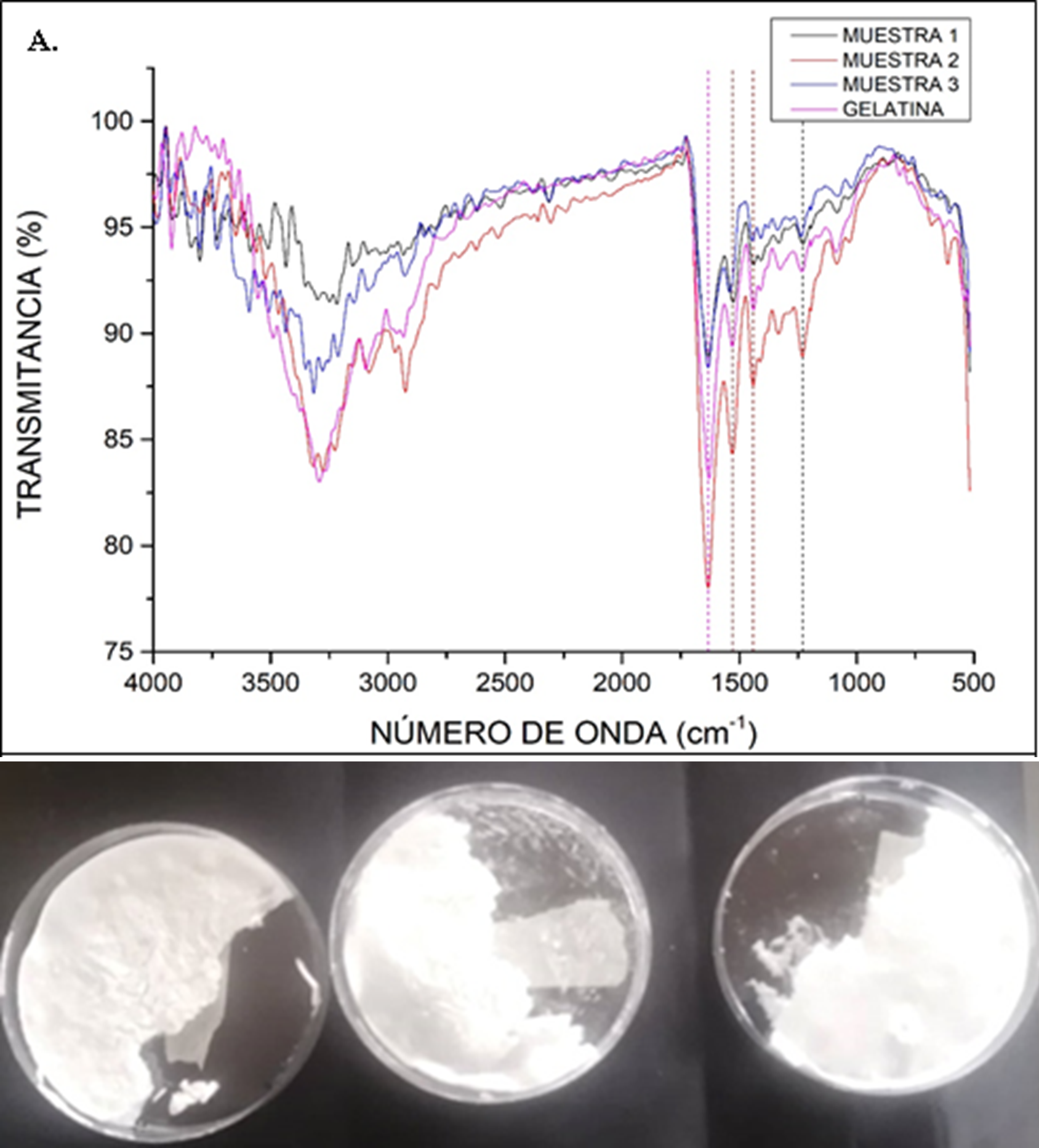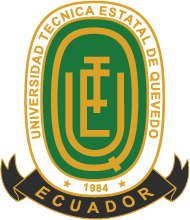Synthesis and characterization of the ideal methacrylation degree for Methacryloyl Gelatin (GelMA)
DOI:
https://doi.org/10.18779/ingenio.v6i2.676Keywords:
methacrylic anhydride, spectroscopy, gelatinee methacryoyl, morphology, timeAbstract
The purpose of this study was to synthesize methacryloyl gelatin by modifying type A gelatin from porcine skin with methacrylic anhydride based on the reaction technique using phosphate saline solution, there were two variable parameters that are methacrylic anhydride and the time of reaction. A total of six samples were obtained that were studied through characterization tests to confirm GelMA formation and morphological analysis. In the infrared spectroscopy with Fourier transform, the chemical groups of each sample were shown, highlighting the peaks of the functional amino groups NH, amides I, II and III. In scanning electron microscopy, the morphology of methacryloyl gelatin and its porous nature were analyzed, obtaining a sample with an average pore size of approximately 150 microns, which will benefit oxygen diffusion and support cell growth; the contact angle of the samples is in a range of 53º and 65º, therefore they have a high degree of wettability.
Downloads
References
D. Oto, y H. Oliva, “Métodos para preparar hidrogeles químicos y físicos basados en almidón: Una revisión”. Revista Latinoamericana de Metalurgia y Materiales, vol. 32, no. 2, 2012.
A. Arredondo y M. Londoño, “Hidrogeles. Potenciales biomateriales para la liberación controlada de medicamentos,” Revista Ingeniería Biomédica, vol. 3, no. 5, pp. 83-94, 2009.
H. Shirahama et al., “Precise Tuning of Facile One-Pot Gelatin Methacryloyl (GelMA) Synthesis,” Scientific Reports, vol. 6, no. 31036, pp. 1-11, 2016.
P. Fratzl, “Collagen: Structure and Mechanics,”MA: Springer Science+Business Media, Boston, 2008.
F. Lima, “Estudo da difusão de luz em amostras aquosas de colágeno na presença de nanopartículas de CaWO4, BaWO4, CaMoO4, BaMoO4 e de pigmento de cúrcuma,” En: repositorio Tesis de masterado, Universidade FederalL do Piauí, 2015.
A. Labeaga, “Polímeros biodegradables. Importancia y potenciales aplicaciones,” Tesis de grado, Universidad Nacional de educación a distancia, 2018.
L. Carbajal, “Anhídrido metacrílico,” Thermo Fisher Scientific Inc, 2021.
X Zhou et al., “3D Bioprinting a Cell-Laden Bone Matrix for Breast Cancer Metastasis Study,” ACS Applied Materials & Interfaces,” vol. 8, no. 44, pp. 30017–30026, 2016.
S. Ramesh y M. Ramalingam, “Aqueous-Mediated Synthesis and Characterization of Gelatin Methacryloyl for Biomedical Applications,” Biointerface Research in Applied Chemistry, vol. 12, no. 5, pp. 6269–6279, 2021.
K. Yue et al., “Synthesis, properties and biomedical applications of gelatin methacryloyl hydrogels (GelMA),” ScienceDirect, vol. 73, pp. 254–271, 2015.
M. Zhu et al., “Gelatin methacryloyl and its hydrogels with an exceptional degree of controllability and batch-to-batch consistency,” Scientific Reports, vol. 9, no. 1, pp. 1–9, 2019.
A. Sáenz, “Biomateriales,” Revista Tecnología En Marcha, vol. 17, no. 1, pp. 34–45, 2004.
H. Yoon et al. “Cold Water Fish Gelatin Methacryloyl Hydrogel for Tissue Engineering Application,” PLoS One, vol. 11, no. 10, pp. 1-18, 2016.
G. Barraza et al. “La microespectroscopía de infrarrojo con transformada de Fourier (FTIRM) en el estudio de sistemas biológicos,” Revista latinoamericana de química, vol. 41, no. 3, pp. 6–7, 2013.
A. Dilia et al., “Espectroscopia infrarroja: una técnica alternativa para la identificación de microorganismos,” Ciencia y Salud, vol. 4, no. 1, pp. 123-131, 2012.
G. Piña et al., “Determinación de la energía libre superficial del líquido sinovial humano en biomateriales,” Ciencia ergo-sum, vol. 28, no. 3, 2021.
N. Zoratto et al., “In situ forming microporous gelatin methacryloyl hydrogel scaffolds from thermostable microgels for tissue engineering. Bioengineering & Translational Medicine,” vol. 5, no. 3, pp. 1–12, 2020.
A. Colorado et al., “Análisis de biomateriales para uso en ingeniería de tejido de piel: revisión,”. Revista Ingeniería Biomédica, vol. 7, no. 14, pp. 11–23, 2013.
S. Mccullen et al., “Nanofibrous composites for tissue engineering applications,” Wiley Interdisciplinary Reviews: Nanomedicine and Nanobiotechnology, vol. 1, no. 4, pp. 369–390, 2009

Published
How to Cite
Issue
Section
License
Copyright (c) 2023 Shirley Dayana Cuzco Vargas, Maria Fernanda Heredia Moyano, Caterine Yesenia Carrasco Montesdeoca

This work is licensed under a Creative Commons Attribution-NonCommercial-ShareAlike 4.0 International License.
Licensing Agreement
This journal provides free access to its content through its website following the principle that making research available free of charge to the public supports a larger exchange of global knowledge.
Web content of the journal is distributed under a Attribution-NonCommercial-ShareAlike 4.0 International.
Authors may adopt other non-exclusive license agreements for the distribution of the version of the published work, provided that the initial publication in this journal is indicated. Authors are allowed and recommended to disseminate their work through the internet before and during the submission process, which can produce interesting exchanges and increase citations of the published work.











